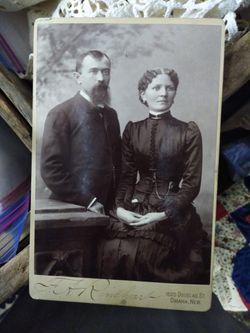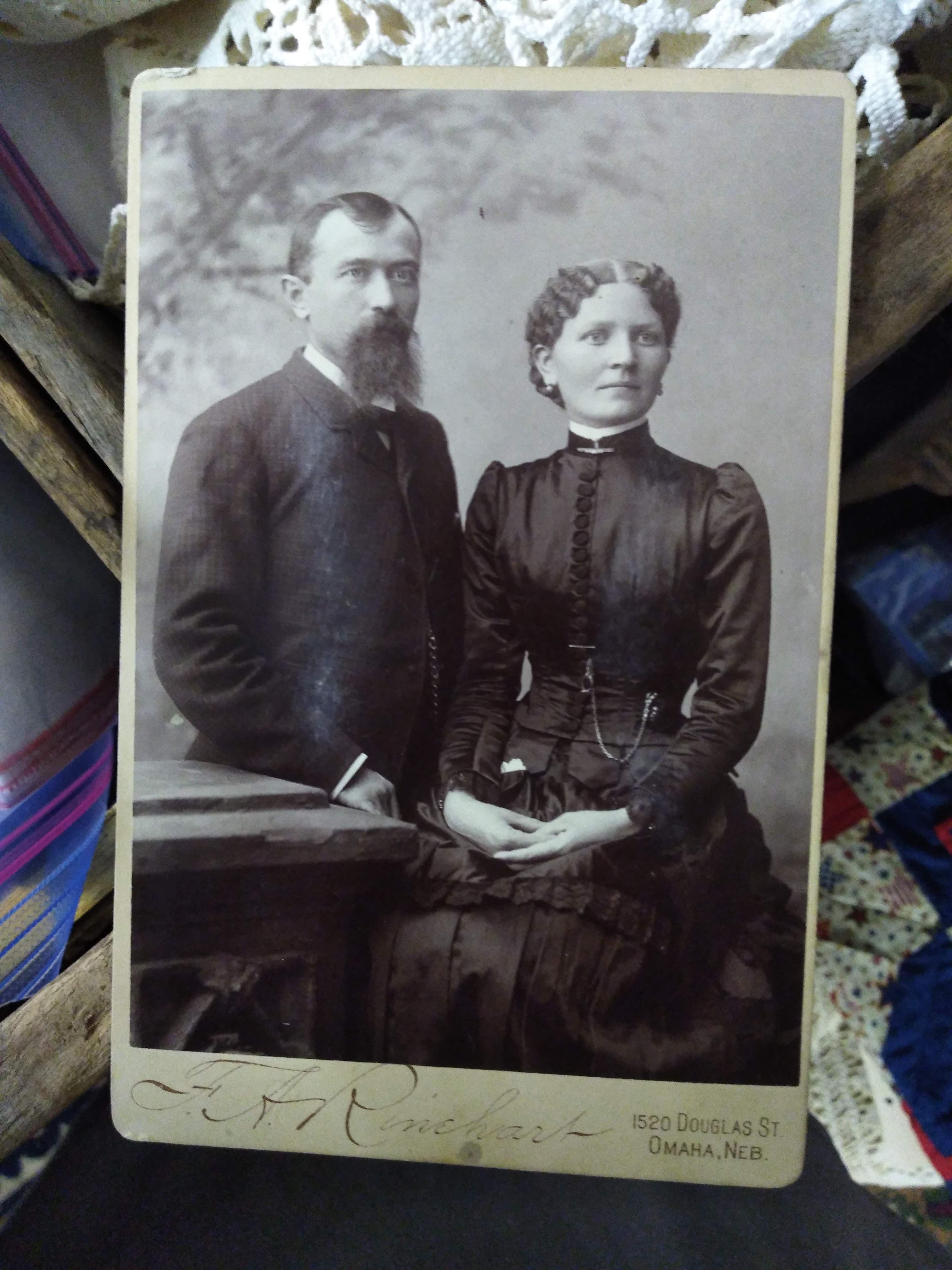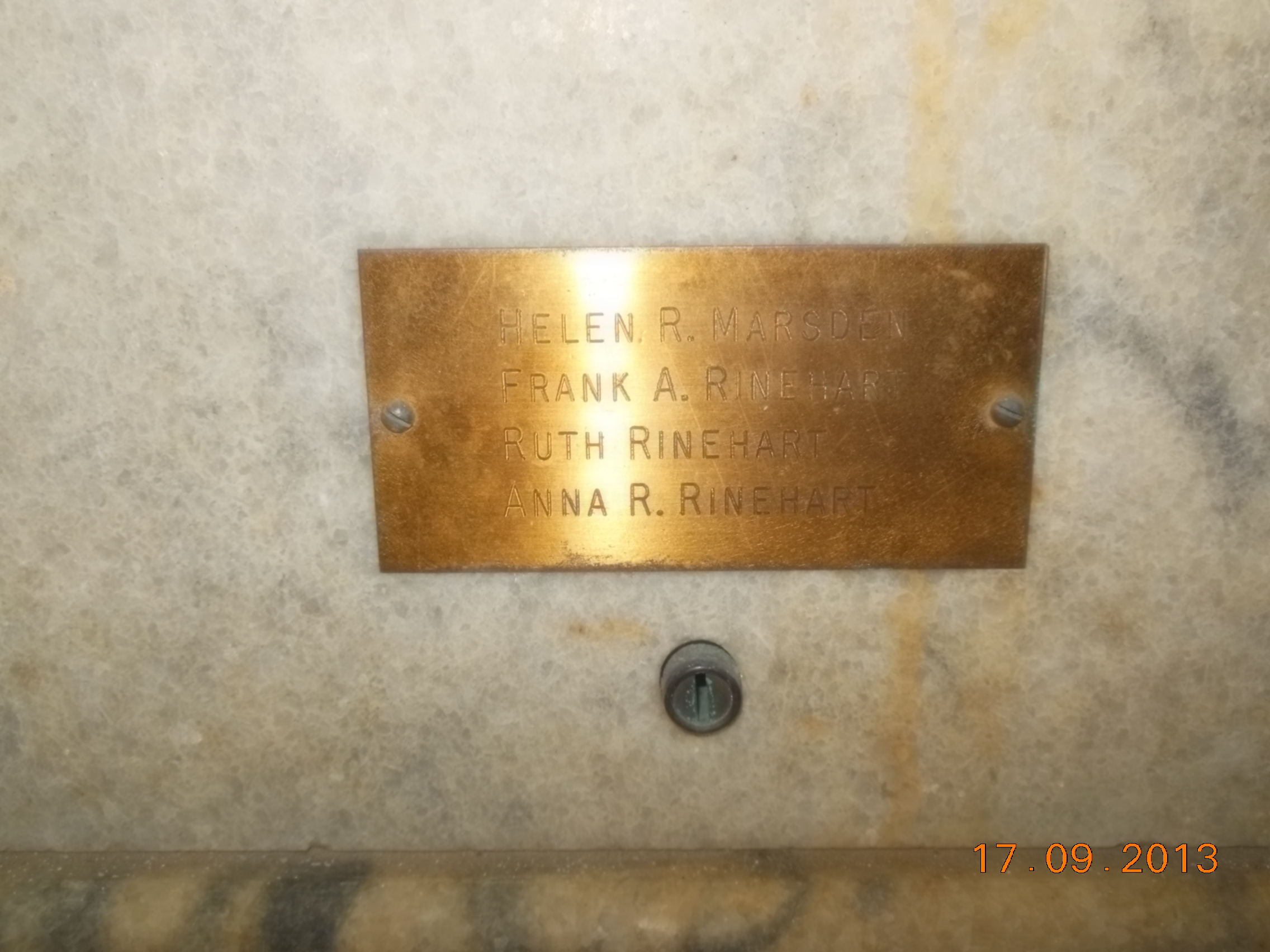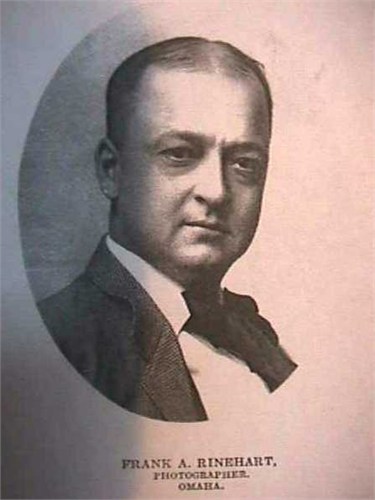Frank Rinehart's Legacy of Images
A Centennial Remembrance
The persons whose images were captured on Frank Rinehart's glass-plate negatives appear dignified and graceful. They represent many nations: Apache, Arapaho, Assiniboine, Blackfeet, Cheyenne, Chippewa, Crow, Flathead, Fox, Iowa, Kiowa, Maricopa, Omaha, Oto, Penobscot, Ponka, Potawatomi, Pueblo, Sauk and Fox, Sioux, Tonkawa, Wichita, and Winnebago. When Rinehart opened his photograph studio in Omaha, who imagined that he would emerge as a leading documentary photographer of the Native American experience?
Rinehart was born in February 1861. He and Alfred, his brother, moved to Colorado in the 1870's and found employment in Denver at the Charles Bohm photograph studio. In 1881 the brothers formed a partnership with photographer William Henry Jackson, a man well-known for his images of the West. Frank Rinehart and Anna, the studio receptionist, evidently caught each other's eye. They married, and in 1885 moved to Nebraska, where they raised their two daughters. In downtown Omaha, Frank opened a studio in the Brandeis Building, where he worked until his death over forty years later.
In 1898 Omaha was the site of the Trans-Mississippi Exposition and Indian Congress. At the time of the Expo, Rinehart hired Adolph Muhr as his assistant. Muhr was primarily responsible for the photographs that the Rinehart studio made of the Indian Congress. Tom Southall, former photograph curator at the University of Kansas' Spencer Art Museum, said of Muhr: "The dramatic beauty of these portraits is especially impressive as a departure from earlier, less sensitive photographs of Native Americans. Instead of being detached, ethnographic records, the Rinehart photographs are portraits of individuals with an emphasis on strength of expression. While Muhr was not the first photographer to portray Indian subjects with such dignity, this large body of work which was widely seen and distributed may have had an important influence in changing subsequent portrayals of Native Americans."
Today the Frank A. Rinehart Photograph Collection consists of 809 glass plate negatives of various sizes. They depict Native Americans who attended the Trans-Mississippi Exposition and Indian Congress, as well as those whom Rinehart photographed in 1899 and 1900 in his Omaha studio. Paula Fleming, curator of photographs at the Smithsonian's National Anthropological Archives, stated that "the Rinehart Indian Photographs, as they were popularly known, constitute one of the best photographic documentations of Indian leaders at the turn of the century."
The Archives at Haskell Indian Nations University in Lawrence, Kansas, is now the home of this incredible collection of glass plate negatives. Since 1994, the collection has been organized, preserved, copied, and cataloged in a computer database. This was funded by the Bureau of Indian Affairs and the Hallmark Foundation. Archivist Bobbi Rahder has worked with the collection for four years to ensure that the originals are preserved and the collection is available to the public. The Haskell Archives staff will put the Rinehart database of 500 scanned images and collateral information on a CD-ROM, which patrons can access at the Haskell Library.
"Beyond the Reach of Time and Change: The Frank A. Rinehart Photographs" is an exhibit of thirty-five newly-made platinum prints--the medium that Rinehart originally used—that was exhibited for several months at the Commerce Bank Arcade in Kansas City, Missouri.* The exhibit is a companion to a new book also titled Beyond the Reach of Time and Change, that will be published this autumn to coincide with the centennial of the Indian Congress. The book will be a special edition art book featuring one hundred photographs, with essays by thirteen Native American artists and writers, including descendants of those shown in the photographs. Rahder is writing the historical introduction, while noted Native American author and poet Simon J. Ortiz edits the anthology of essays and photographs. **
Frank Rinehart was an ordinary businessman, but in the process of everyday work he created an extraordinary legacy of images. He died on December 17, 1928 in New Haven, Connecticut. Anna Rinehart operated the family business with her son-in-law, George Marsden, until ill health forced her to retire in 1952. She died on August 26, 1955. Marsden operated the studio until his own death in 1966.
Bobbi Rahder
Haskell Indian Nations University
Frank Rinehart's Legacy of Images
A Centennial Remembrance
The persons whose images were captured on Frank Rinehart's glass-plate negatives appear dignified and graceful. They represent many nations: Apache, Arapaho, Assiniboine, Blackfeet, Cheyenne, Chippewa, Crow, Flathead, Fox, Iowa, Kiowa, Maricopa, Omaha, Oto, Penobscot, Ponka, Potawatomi, Pueblo, Sauk and Fox, Sioux, Tonkawa, Wichita, and Winnebago. When Rinehart opened his photograph studio in Omaha, who imagined that he would emerge as a leading documentary photographer of the Native American experience?
Rinehart was born in February 1861. He and Alfred, his brother, moved to Colorado in the 1870's and found employment in Denver at the Charles Bohm photograph studio. In 1881 the brothers formed a partnership with photographer William Henry Jackson, a man well-known for his images of the West. Frank Rinehart and Anna, the studio receptionist, evidently caught each other's eye. They married, and in 1885 moved to Nebraska, where they raised their two daughters. In downtown Omaha, Frank opened a studio in the Brandeis Building, where he worked until his death over forty years later.
In 1898 Omaha was the site of the Trans-Mississippi Exposition and Indian Congress. At the time of the Expo, Rinehart hired Adolph Muhr as his assistant. Muhr was primarily responsible for the photographs that the Rinehart studio made of the Indian Congress. Tom Southall, former photograph curator at the University of Kansas' Spencer Art Museum, said of Muhr: "The dramatic beauty of these portraits is especially impressive as a departure from earlier, less sensitive photographs of Native Americans. Instead of being detached, ethnographic records, the Rinehart photographs are portraits of individuals with an emphasis on strength of expression. While Muhr was not the first photographer to portray Indian subjects with such dignity, this large body of work which was widely seen and distributed may have had an important influence in changing subsequent portrayals of Native Americans."
Today the Frank A. Rinehart Photograph Collection consists of 809 glass plate negatives of various sizes. They depict Native Americans who attended the Trans-Mississippi Exposition and Indian Congress, as well as those whom Rinehart photographed in 1899 and 1900 in his Omaha studio. Paula Fleming, curator of photographs at the Smithsonian's National Anthropological Archives, stated that "the Rinehart Indian Photographs, as they were popularly known, constitute one of the best photographic documentations of Indian leaders at the turn of the century."
The Archives at Haskell Indian Nations University in Lawrence, Kansas, is now the home of this incredible collection of glass plate negatives. Since 1994, the collection has been organized, preserved, copied, and cataloged in a computer database. This was funded by the Bureau of Indian Affairs and the Hallmark Foundation. Archivist Bobbi Rahder has worked with the collection for four years to ensure that the originals are preserved and the collection is available to the public. The Haskell Archives staff will put the Rinehart database of 500 scanned images and collateral information on a CD-ROM, which patrons can access at the Haskell Library.
"Beyond the Reach of Time and Change: The Frank A. Rinehart Photographs" is an exhibit of thirty-five newly-made platinum prints--the medium that Rinehart originally used—that was exhibited for several months at the Commerce Bank Arcade in Kansas City, Missouri.* The exhibit is a companion to a new book also titled Beyond the Reach of Time and Change, that will be published this autumn to coincide with the centennial of the Indian Congress. The book will be a special edition art book featuring one hundred photographs, with essays by thirteen Native American artists and writers, including descendants of those shown in the photographs. Rahder is writing the historical introduction, while noted Native American author and poet Simon J. Ortiz edits the anthology of essays and photographs. **
Frank Rinehart was an ordinary businessman, but in the process of everyday work he created an extraordinary legacy of images. He died on December 17, 1928 in New Haven, Connecticut. Anna Rinehart operated the family business with her son-in-law, George Marsden, until ill health forced her to retire in 1952. She died on August 26, 1955. Marsden operated the studio until his own death in 1966.
Bobbi Rahder
Haskell Indian Nations University
Gravesite Details
Date of Interment 12 28 1928
Family Members
Sponsored by Ancestry
Advertisement
Explore more
Sponsored by Ancestry
Advertisement













